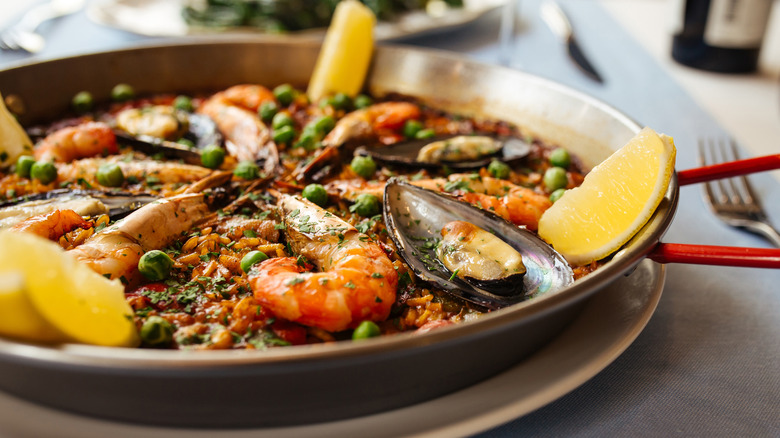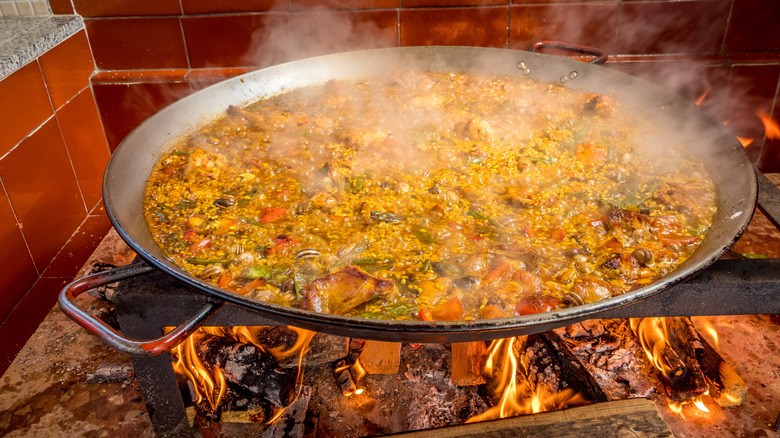Why You Should Always Make Paella In A Wide, Shallow Pan
Did you know that paella, the rice dish loved all over Spain and beyond, is actually named for the pan it's cooked in? Just mentioning the word paella conjures the mental image of a beautiful wide pan of rice, amber colored from saffron and other spices, and decorated with seafood and vegetables on top. There's an important reason the pan and the dish are firmly connected — cooking Spanish rice in a shallow pan allows just the right amount of liquid to be added so that each grain of rice is perfectly cooked. It's not an exaggeration to say that the pan shape is as essential to the finished dish as any of the other ingredients.
Traditional Spanish short-grain rice absorbs much more liquid than long-grain rice and plumps up as it cooks. Two and a half cups of liquid are often recommended per cup of dry rice, but because the moisture content of rice varies with each harvest, some batches might need more than others. By cooking in a wide, shallow pan, you can gradually add liquid exactly where needed, avoiding the catastrophe of a soggy, mealy result. Also, since paella is cooked uncovered at high temperatures, if the pan were any deeper, the top layer of rice would over-absorb the broth and weigh down the bottom layer.
Perfect your paella
These large pans are not just for show — for every additional person you want to serve, the diameter (not the depth) of a paella pan increases. A four-person paella pan is about 12 inches across, and an eight-person pan jumps up to 15 inches across. To serve a party of fifty requires a pan nearly 36 inches across!
You don't need a special pan to make paella, a skillet works just as well, just remember not to overload it. The rule of thumb is ½ cup of rice per person you want to serve. If you want to make more, choose a wide pan or use two skillets. After you've added the measure of liquid your recipe calls for, allow the paella to simmer without stirring, checking a small bite of rice from time to time. If the liquid becomes absorbed, you'll notice the dry patches because the pan is shallow, and you can spoon liquid directly over those areas. Because paella is not stirred once the stock is added, supplementing liquid to get a good caramelization around the grains is critical. With a bit a bit of practice, you'll be making perfectly cooked paella every time!

